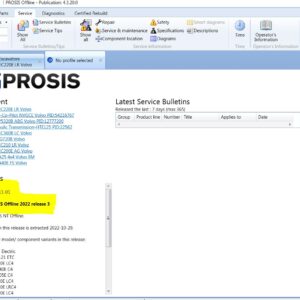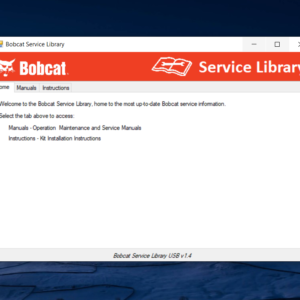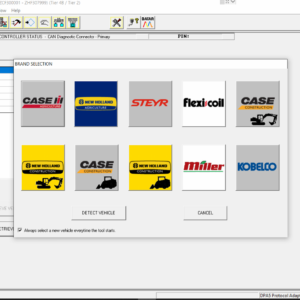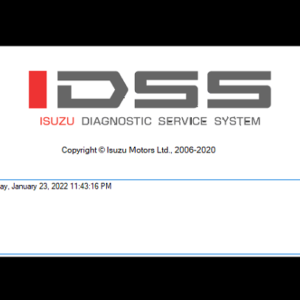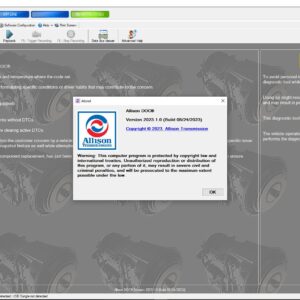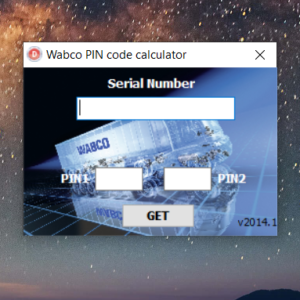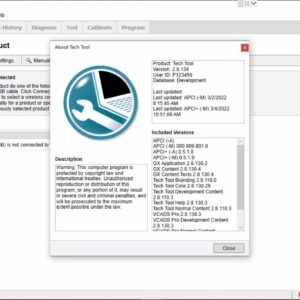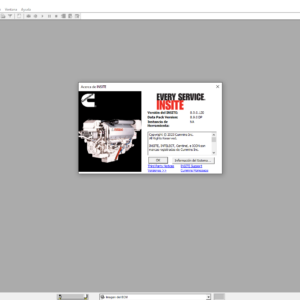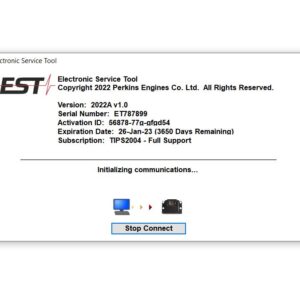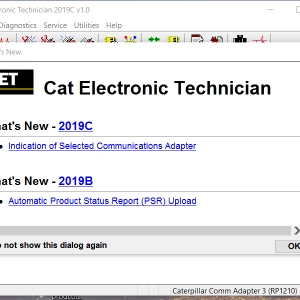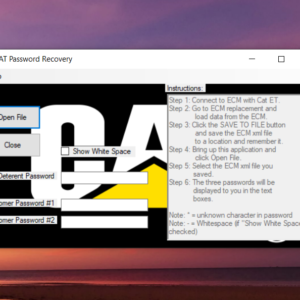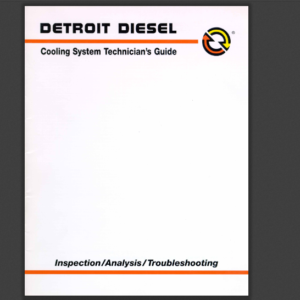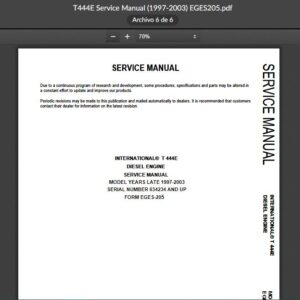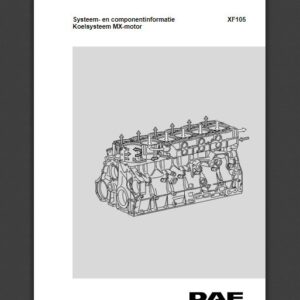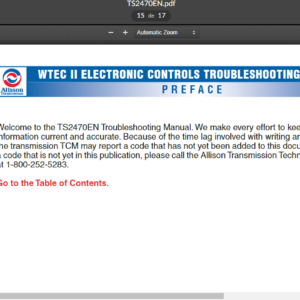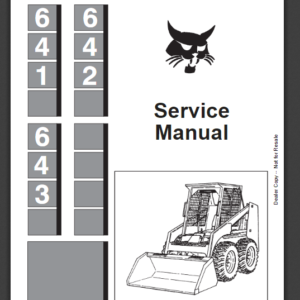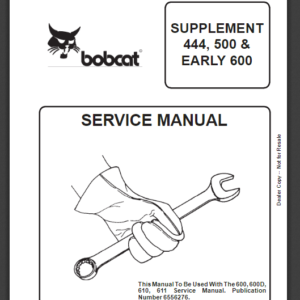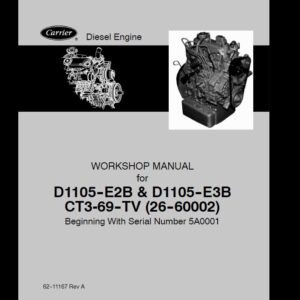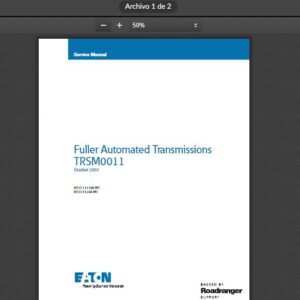Cummins ISX11.9 CM2250 (2010-12) Fault Code: 2638 (X) PID: SID 380 SPN: 5298 FMI: 17 Aftertreatment Diesel oxidation Catalyst Conversion Efficiency- Data Valid But Below Normal Operating range- Least Severe Level
Circuit Description
The aftertreatment system is monitored by three temperature sensors that are located in the exhaust system. The aftertreatment intake temperature sensor is located after the turbocharger outlet, at the intake of the aftertreatment system. The aftertreatment DPF intake temperature sensor is located between the aftertreatment DOC and the aftertreatment DPF. The aftertreatment DPF outlet temperature sensor is located after the aftertreatment DPF. The temperature sensors around the aftertreatment DOC are used to monitor the temperature differential across the catalyst during active regeneration of the aftertreatment system.
Component Location
The aftertreatment DOC is located in the exhaust system. The location of the catalyst can vary, depending on the original equipment manufacturer (OEM). Refer to the OEM service manual.
Conditions for Running the Diagnostics
Active regeneration of the aftertreatment DPF must be occurring before the diagnostic will function.
Conditions for Setting the Fault Codes
The engine control module (ECM) detects that the temperature differential across the aftertreatment DOC during active regeneration is not matching the expected temperature increase.
Action Taken When the Fault Code is Active
The ECM logs the fault code immediately when the diagnostic runs and fails on two consecutive trips.
The exhaust gas recirculation (EGR) valve operation will be disabled.
Engine torque will be reduced if the engine is operated for an extended period of time with this fault active.
Conditions for Clearing the Fault Code
The fault code will be set to inactive after performing INSITE? electronic service tool Aftertreatment DPF regeneration test, and the DOC efficiency is determined to be above a calibratible threshold.
The fault code status displayed by INSITE? electronic service tool will change to INACTIVE immediately after the diagnostic runs and passes.
For On-Board Diagnostics (OBD) engines, the ECM will turn off the malfunction indicator lamp (MIL) after three consecutive trips where the diagnostic runs and passes.
The ?Reset All Faults? command in INSITE? electronic service tool can be used to clear active and inactive faults, as well as extinguish the MIL for OBD applications.
Shop Talk
This fault code is logged when the conversion efficiency of the DOC is calculated to be less than that required to perform an effective regeneration.
Possible causes of this fault code include:
Soot plugging the front face of the aftertreatment DOC
Engine oil or fuel contamination of the aftertreatment DOC
A cracked or contaminated aftertreatment DOC
A damaged aftertreatment fuel injection system
A leaking exhaust system between the turbocharger and the DOC.
An in-range malfunction of the aftertreatment DOC or the aftertreatment DPF inlet temperature sensor can cause this fault code. Make sure there are not any fault codes related to the aftertreatment temperature sensors before following this troubleshooting tree.
Reference the appropriate OEM wiring diagram when troubleshooting circuits that utilize wiring supplied by the OEM.
For intermittent power supply and data link communication issues with aftertreatment components, it is highly recommended that the OEM Power Distribution Center fuses and relays be thoroughly checked for loose, missing, or intermittent connections.
Possible Cause:
1) Aftertreatment Injector
2) ECM calibration
-
Bobcat Service Library [03.2019] Service, Operator, Maintenance, Bulletines, etc full update
Bobcat $110.00Rated 0 out of 5
-
Hino Diagnostic eXplorer 2 – Hino DX2 v1.1.21.4 with keygen unlocked ( Hino trucks )
Hino $60.00Rated 0 out of 5 -
Scania SDP3 2.48.6 Diagnosis & Programming for VCI 3 VCI3 without Dongle
Scania $30.00Rated 0 out of 5 -
volvo Devtool Studio V2 / V3 / V4 Developer tool plus 2.6 / 2.7
Trucks software $35.00Rated 0 out of 5 -
Volvo Premium Tech Tool PTT 2.8.130 Diagnostic Software 04.2022 ACPI ( 1 PC )
Trucks software $143.00Rated 0 out of 5
Related products
-
Allison 1000 & 2000 Gen 4 Fault Codes: P0122 Pedal Position Sensor Circuit Low Voltage
1000 & 2000 Gen 4 $50.00Rated 0 out of 5 -
Allison 1000 & 2000 Gen 4 Fault Codes: P0846 Transmission Pressure Switch Solenoid D Circuit Stuck Open
1000 & 2000 Gen 4 $50.00Rated 0 out of 5 -
Allison 1000 & 2000 Gen 4 Fault Codes: U1096 J1850 (Class 2) IPC Controller State of Health Failure
1000 & 2000 Gen 4 $50.00Rated 0 out of 5 -
Allison 1000 & 2000 Gen 4 Fault Codes: P2773 Torque Control Request Ignored – ECM/TCM
1000 & 2000 Gen 4 $50.00Rated 0 out of 5 -
Allison 1000 & 2000 Gen 4 Fault Codes: P0218 Transmission Fluid Over Temperature Condition
1000 & 2000 Gen 4 $50.00Rated 0 out of 5 -
Allison 1000 & 2000 Gen 4 Fault Codes: P1779 Engine Torque Delivered To TCM Signal
1000 & 2000 Gen 4 $50.00Rated 0 out of 5 -
Allison 1000 & 2000 Gen 4 Fault Codes: U0073 CAN Bus Reset Counter Overrun
1000 & 2000 Gen 4 $50.00Rated 0 out of 5 -
Allison 1000 & 2000 Gen 4 Fault Codes: P0880 TCM Supply Voltage
1000 & 2000 Gen 4 $50.00Rated 0 out of 5 -
Allison 1000 & 2000 Gen 4 Fault Codes: P0870 Transmission Pressure Switch Solenoid E Circuit
1000 & 2000 Gen 4 $50.00Rated 0 out of 5 -
Allison 1000 & 2000 Gen 4 Fault Codes: P0871 Transmission Pressure Switch Solenoid E Circuit Stuck Open
1000 & 2000 Gen 4 $50.00Rated 0 out of 5 -
Allison 1000 & 2000 Gen 4 Fault Codes: U1064 J1850 (Class 2) TBC Controller State of Health Failure
1000 & 2000 Gen 4 $50.00Rated 0 out of 5 -
Allison 1000 & 2000 Gen 4 Fault Codes: P0875 Transmission Reverse Pressure Switch Circuit Malfunction
1000 & 2000 Gen 4 $50.00Rated 0 out of 5 -
Allison 1000 & 2000 Gen 4 Fault Codes: P0872 Transmission Pressure Switch Solenoid E Circuit Stuck Closed
1000 & 2000 Gen 4 $50.00Rated 0 out of 5 -
Allison 1000 & 2000 Gen 4 Fault Codes: P1688 Unmanaged Engine Torque Delivered To TCM Signal
1000 & 2000 Gen 4 $50.00Rated 0 out of 5 -
Allison 1000 & 2000 Gen 4 Fault Codes: P1891 Engine Throttle Position Sensor Pulse Width Modulation (PWM) Signal Low Input
1000 & 2000 Gen 4 $50.00Rated 0 out of 5
-
Allison Transmission – WTEC 2 MD/HD/B SERIES TRANSMISSIONS
Allison$20.00Original price was: $20.00.$16.00Current price is: $16.00.Rated 0 out of 5

